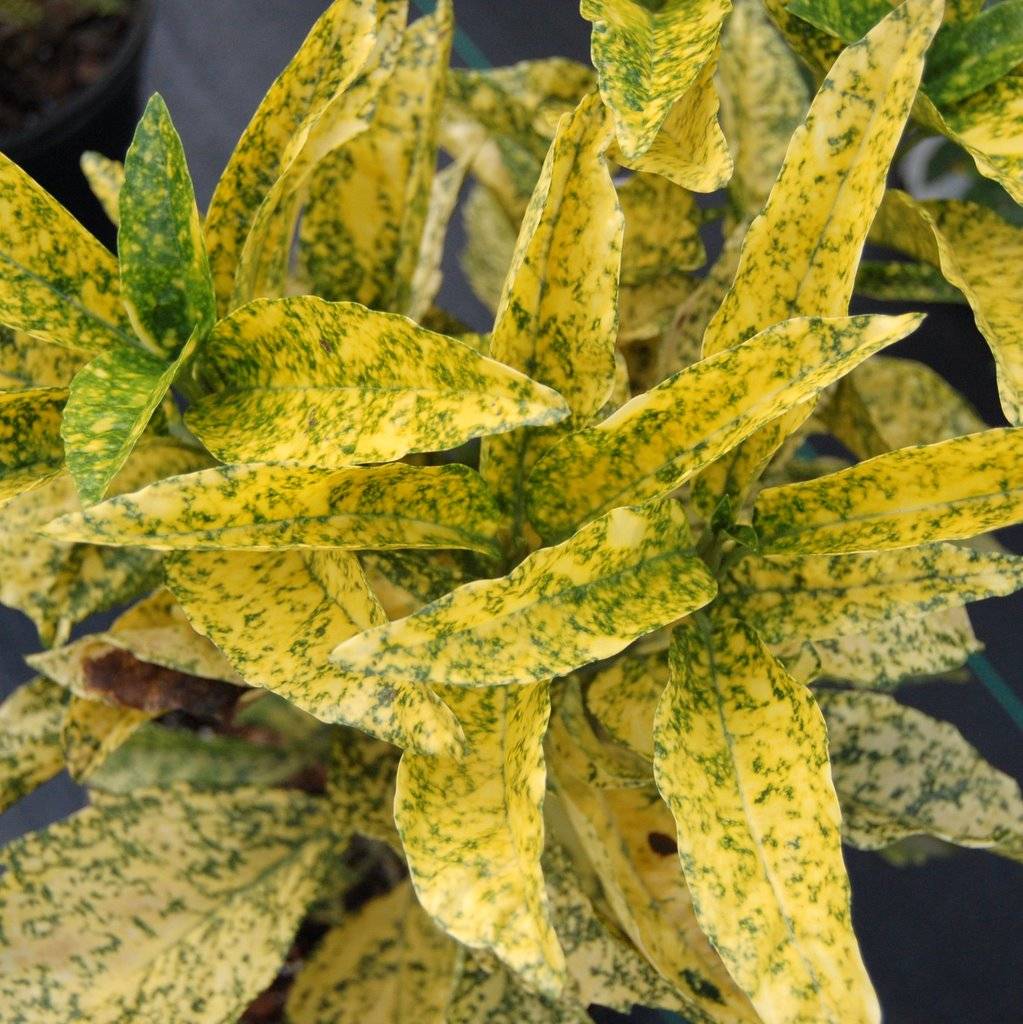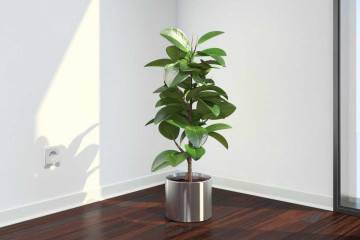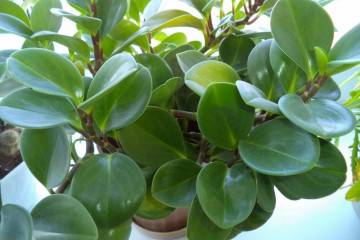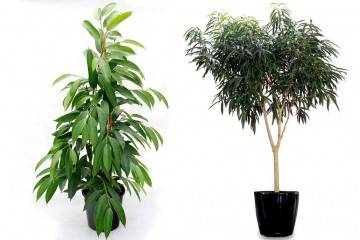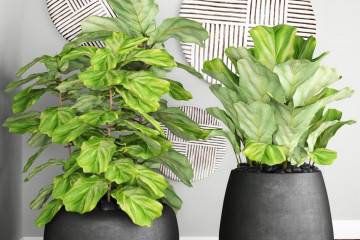Japanese Aucuba (Aucuba Japonica) - home care
Content:
Aukuba japonica is a beautiful and unusual tree. The large green leaves are adorned with small dots of gold color - this makes the plant beautiful. It can be grown both in an apartment and at home.
Description
Aucuba japonica (aucuba japonica) grows in East Asia in subtropical forests. At home, this is a small perennial evergreen tree. His homeland is Japan. It appeared in Europe only in the 18th century.
For a long time, the plant was only available to wealthy people. The fact is that the aucubus is difficult to transport and many specimens could not withstand transportation. Therefore, it had a high cost - accordingly, only wealthy residents of Europe had access to it.
The leaves of the aucuba are elongated, with pointed tips, dense and glossy. Painted dark green. A distinctive feature is a scattering of yellowish dots on the surface.
Healing properties
Aucuba or "golden tree" perfectly cleans the air from harmful particles. The leaves of the plant can be applied to burns or wounds.
When crushed, they are used as compresses. They can help speed up the healing of bruises.
Common varieties
At home, aucuba is a flower that grows very quickly. In total, there are several different varieties that have their own unique characteristics. Decorative pieces will decorate any home.
Famous varieties:
- Aucuba Crotonifolia is a tall shrub that reaches 3 meters in width. Leaves grow up to 20 cm. Dots of different shapes, and they can merge into small patterns.
- Hillery - narrow elongated dark green leaves, serrated along the edges.
- Variegata - the species has a brighter and lighter color. The leaves are decorated with a scattering of yellow dots.
- Goldiana - similar to Variegata, but with a large spot size and large leaves.
- Dentata - a feature of the variety - a monochromatic color of the leaves. They are green and have pointed tips. It resembles a holly plant.
Japanese aucuba: home care
The plant is unpretentious. If everything is organized correctly, then the flower will delight for many years.
What Japanese aucuba needs:
- Temperature. The plant does not tolerate sudden changes in temperature, in the warm season it must be maintained at 20 ° C, in winter up to 8 ° C. In no case should it be allowed to drop to 5 ° C - this will lead to the death of the plant.
- Lighting. Partial shade or subdued sun is desirable. Variegated varieties need a lot of ambient light. In the shade, species with dark green foliage feel good.
- Watering. In the warm season, water is often watered abundantly, but avoiding stagnation of moisture in the pot. In cold weather, allow the soil to dry out between waterings.
- Humidity. In the summer, it is enough to spray twice a day, in the winter - once.
- Priming. You can use universal mixes, or collect the earth yourself.To do this, you need to take in equal parts leafy soil and peat, one part of sand and part of a clay-sod mixture.
- Top dressing. In the summer, they provide mineral and organic fertilizing. You can use complex tools.
If you carefully look at the information above, it will become clear that it is not difficult to organize care for the aucuba. You just need to follow the simple conditions of keeping and the plant will delight with active growth.
Winter care
Since October, the number of waterings is reduced to 1-2 per week, allowing the land to dry out thoroughly. The temperature should be at 10 ° C.
Further, it is enough not to overmoisten the soil, spray the leaves and not put the pot in the bright sun.
In winter, they do not give any additional fertilizing.
Pruning
The plant needs an annual procedure to remove excess shoots. This is important for the formation of the correct crown.
To do this, in mid-April or early May, you need to remove all branches that are too long, damaged or spoiled.
It is imperative to do pruning, as otherwise the plant will grow poorly. Such a procedure will stimulate the development of lateral shoots, which will give the crown a magnificent shape. Therefore, for the appearance of growth, you need to slightly cut off the tops of the branches.
Bloom
Aucuba almost never blooms at home. In rare cases, nondescript red flowers appear in June. They are collected in small inflorescences. Then they give red large inedible berries.
Flowers and berries are not of particular interest to most indoor plant lovers, they rarely strive for their appearance.
Reproduction
At home, Japanese aucuba propagates better by cuttings. To do this, it is enough to cut off the shoot from the parent plant and put it in water. You can add a growth stimulator "Kornevin" or its analogues. After the first roots appear, the aucuba must be planted in the ground.
Another option is seeds, but they can only be obtained in a greenhouse. You can buy aucuba seeds in the store and use a small greenhouse for germination - the seeds are planted in a pot and covered with a glass jar. The method is considered unproductive.
Transfer
Aucuba grows outdoors only in warm countries. It can develop for a long time in one place. At home, the pot can be taken out into the open air. For example, on the balcony, the plant will feel comfortable.
Aucuba japonica needs a transplant after purchase. This should be done using the transshipment method. For this, the plants are completely taken out of the pot and the earthen lump is not disassembled.
The new pot should be 1-1.5 cm larger than the coma. A layer of expanded clay or broken brick should be poured onto the bottom - this will be a drainage that will prevent water from stagnating.
Possible problems
The Japanese Aucuba has an average resistance to the appearance of various diseases. Defects often appear due to improper care. With a lack of light, the leaves will lose their variegated color. Therefore, it is necessary to choose the right place for the pot.
Leaves can turn yellow due to too bright sun. For Japanese aucuba, partial shade or diffused light is suitable. Lack of growth can occur due to lack of nutrients in the soil.
Leaves begin to dry out due to insufficient watering and dry air. In this case, it is necessary to establish the conditions for keeping the plant. Even a novice florist can take care of the aucuba. The main condition: strict adherence to the recommendations.
Sometimes the shoots of the aucuba become thin - this happens when there is a lack of fertilizer.A plant can shed its leaves with a sharp change in temperature or with drafts.
The plant is affected by such pests as scale insects, aphids, spider mites. When they appear, all flowers must be treated with insecticides.
Japanese aukuba is presented in different varieties. The description of each of them allows you to get an idea of the characteristics of a particular plant. You can take different types and make beautiful compositions from them. It looks especially good in gardens.
The plant is found in the south of the country: in the Crimea and other hot areas. It grows quickly and looks beautiful, does not require special care. Aucuba is especially popular in the Caucasus.

